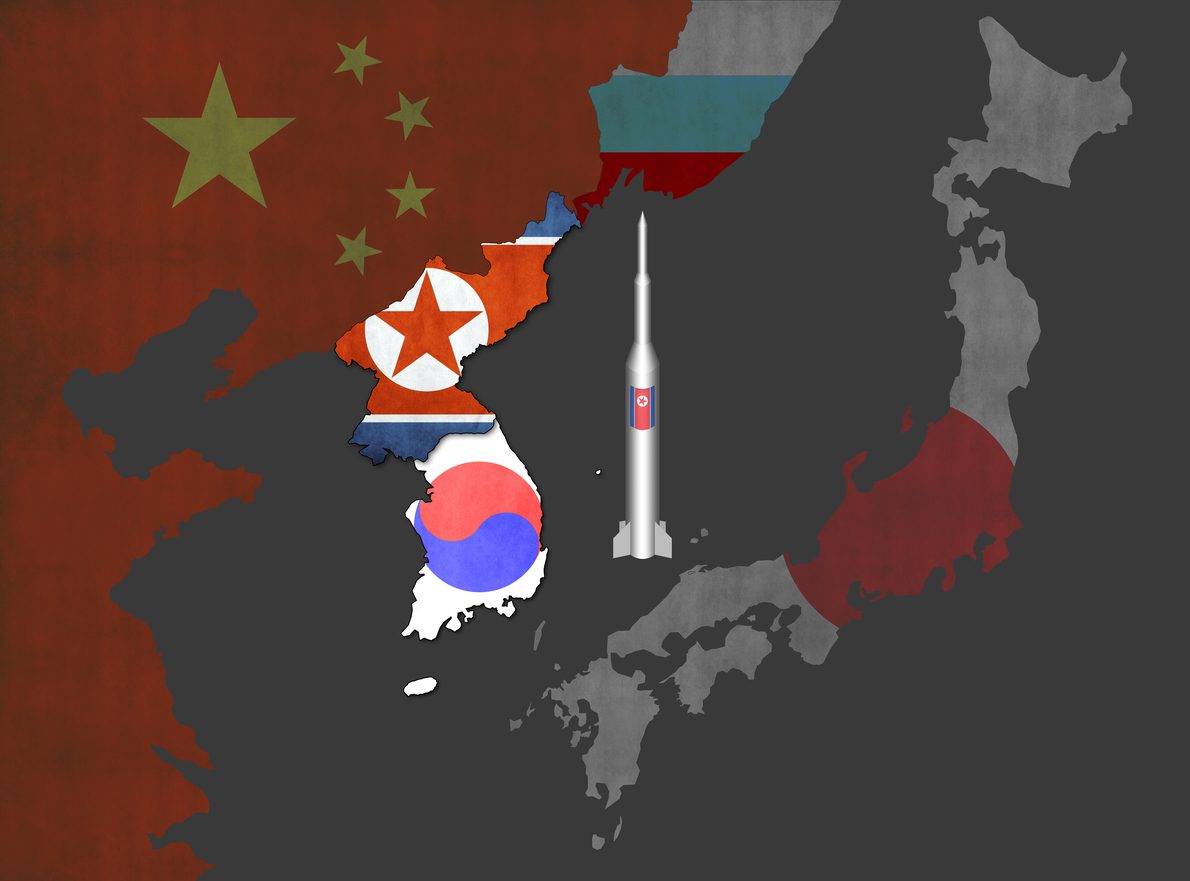Global Courant 2023-04-28 00:37:01
The United States and South Korea have unveiled an agreement under which leaders in Seoul will be given a greater role in planning any nuclear response to an attack by North Korea in the region.
Announced at a state visit to Washington by South Korean President Yoon Suk Yeol on April 26, 2023, the so-called “Washington Declarationwill see US deployment of “strategic assets” around the Korean Peninsula, including an upcoming nuclear submarine visit. The last time the US had nuclear weapons in South Korea was in 1991.
Sung-Yoon Lee, an expert on US-Korea relations at Tufts University, explains what the decision to revive nuclear relations means and why it is here now.
What does the ‘Washington Declaration’ say?
Well, there is strong language. While the US has repeatedly “reaffirmed its commitment to South Korea’s defense” in the past, the wording in the Washington Declaration is more robust. It builds on the language used in the joint statement released during Biden’s visit shortly afterwards to Seoul Yoon took office May 2022.
On that occasion, the U.S. pledged its “comprehensive deterrent commitment to the Republic of Korea using the full range of U.S. defense capabilities, including nuclear, conventional, and missile defense capabilities.”
This time, let there be no doubt, that confirmation is made “in the strongest possible words.”
But what does that mean in real terms? First, the US “commits to making every effort to consult” with the Republic of Korea “on the possible deployment of nuclear weapons in the Korean Peninsula.”
More substantively, the two sides commit “to engage in deeper, cooperative decision-making on nuclear deterrence,” including through “enhanced dialogue and information sharing on growing nuclear threats” for South Korea.
It will be a welcome development for decision-makers in South Korea, although it raises questions about how much information about North Korea’s threat and capabilities the US – and Japan, with its advanced signal intelligence systems – have not shared with previous governments in Seoul.
Second, the two allies will create a new nuclear advisory group to “strengthen comprehensive deterrence, discuss nuclear and strategic planning, and manage the growing threat from Pyongyang.” This means Seoul will now sit at the table when it comes to planning a nuclear response strategy and preparing its “conventional support for US nuclear operations in an emergency.”
From right: U.S. First Lady Jill Biden, U.S. President Joe Biden, South Korean President Yoon Suk Yeol and behind him South Korea’s First Lady Kim Keon Hee attend a wreath-laying ceremony at the Korean War Memorial in Washington , DC , on Tuesday, April 25, 2023. Photo: EPA
In short, Seoul will now have much more of a say in sharing information and planning a joint long-term nuclear strategy, focusing on its own role in any future flare-up on the Korean peninsula.
It’s a big step forward.
Why are the US and South Korea announcing this now?
The international security environment has changed dramatically over the past year, requiring credible countermeasures from the two allies, in conjunction with Japan. North Korea has fired over 100 missiles since January 2022. Meanwhile Russia invasion of Ukraine and are many alleged war crimes drew alone China and North Korea closer in its atmosphere. And China has gone beyond its usual”wolf-warrior diplomacyrhetoric by holding threatening military exercises around Taiwan in August and, again, this April.
The Washington Declaration is coming 70th Anniversary of the Alliance between Washington and Seoul. The timing serves as an opportunity to reflect on and reassess the relationship. But the main drivers behind this strongly worded reaffirmation of the alliance are undoubtedly the recent actions of the governments in Pyongyang, Moscow and Beijing.
How has South Korea’s stance on nuclear options evolved?
The Korean Peninsula has gone through two periods of actual “denuclearization” since the 1953 armistice that ended fighting during the Korean War.
The first wash In the seventies when the US catching wind of South Korea’s secret nuclear weapons program, threatened to withdraw all its troops from the south unless Seoul completely dismantled the program. And so the government abandoned its nuclear ambitions.
The second came in 1991 when the US and South Korea – perhaps anticipating the imminent collapse of the Soviet Empire and a severely weakened North Korea – agreed to withdraw all US tactical nuclear weapons from the South, as well as the North working on its own nuclear program while strong talk “denuclearization.”
But in recent years, public opinion in South Korea has strongly shifted towards self-nuclearization rather than relying on US supplies off the coast of South Korea. North Korea’s relentless pursuit of more powerful nuclear and missile capabilities, starting with the resumption of ballistic missile tests in May 2019 after an 18-month hiatus, views to the south have froze.
President Yoon himself floated the idea of self-nuclearization earlier this year. But the Washington Declaration seems to have dampened that sentiment. In it, Yoon “affirmed” the Republic of Korea’s “longstanding commitment” to the Nuclear Non-Proliferation Treatywhich would prevent the country from building up its own nuclear weapons stockpile.
How will the declaration affect regional tensions?
A staple of North Korean propaganda is that its weapons program is in response to US “hostile policy” — what Pyongyang describes as anything from Washington that expresses concerns about the North blatant human rights record to the deployment of US troops in South Korea And joint military exercises between the US and South Korea.
North Korea has launched more than 100 missiles since early 2022. Photo: KCNA
As such, it is reasonable to assume that Pyongyang will respond with one or two threats in the coming days. With the Washington Declaration as a cover, expect North Korea to undertake yet another brutal act of defiance.
Last December, Kim Yo Jong, the sister and deputy of the North Korean leader, threatened an intercontinental ballistic missile test on a normal trajectory, rather than the precipitous launches that don’t threaten nearby lands. And in 2017, former North Korea foreign minister Ri Yong Ho suggested that Kim Jong Un was considering a hydrogen bomb test over the Pacific. Both would mean an incitement to North Korea’s provocations.
Meanwhile, China will likely fall back on its decades-old mantra that trouble should be on the Korean Peninsula resolved “through dialogue– a position that not only does not penalize Pyongyang, but indirectly makes the isolationist state stronger.
Sung Yoon Lee is a professor of Korean studies Tufts University.
This article has been republished from The conversation under a Creative Commons license. Read the original article.
Similar:
Loading…








